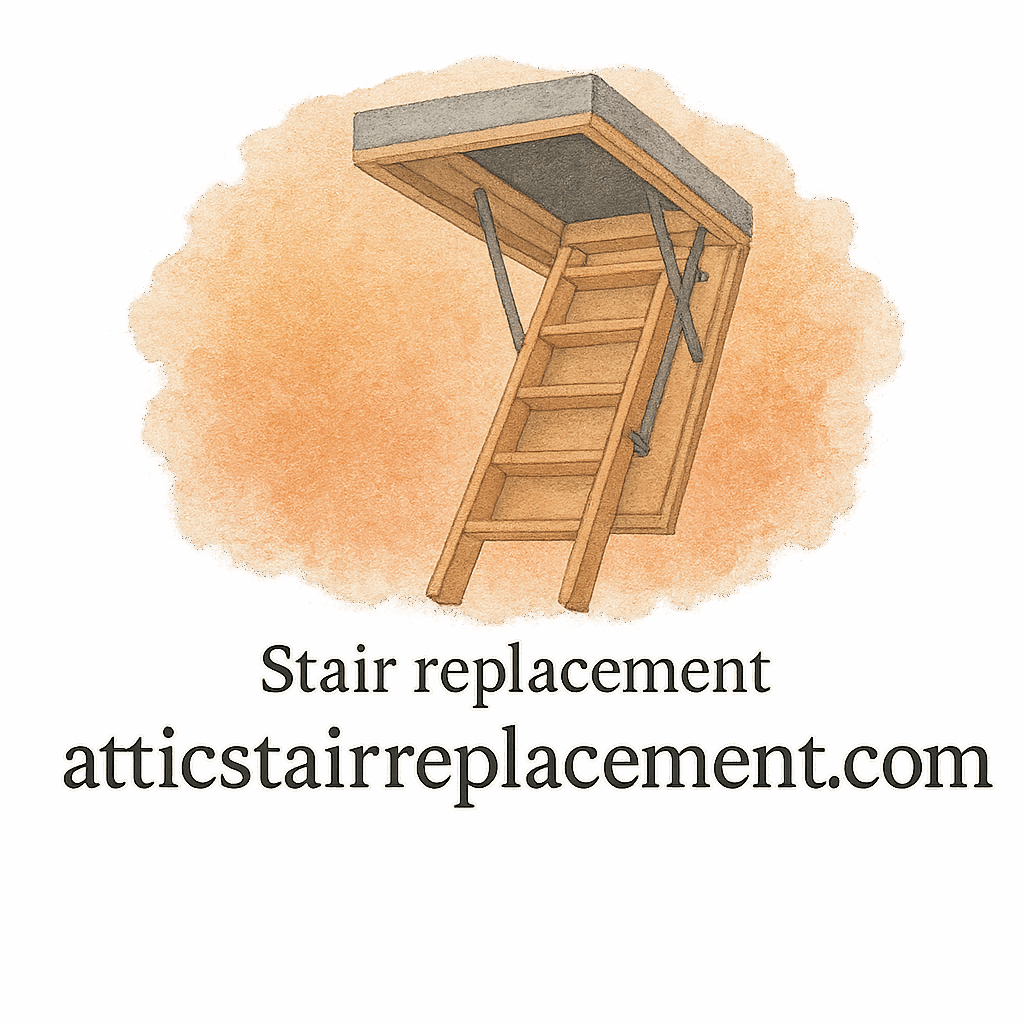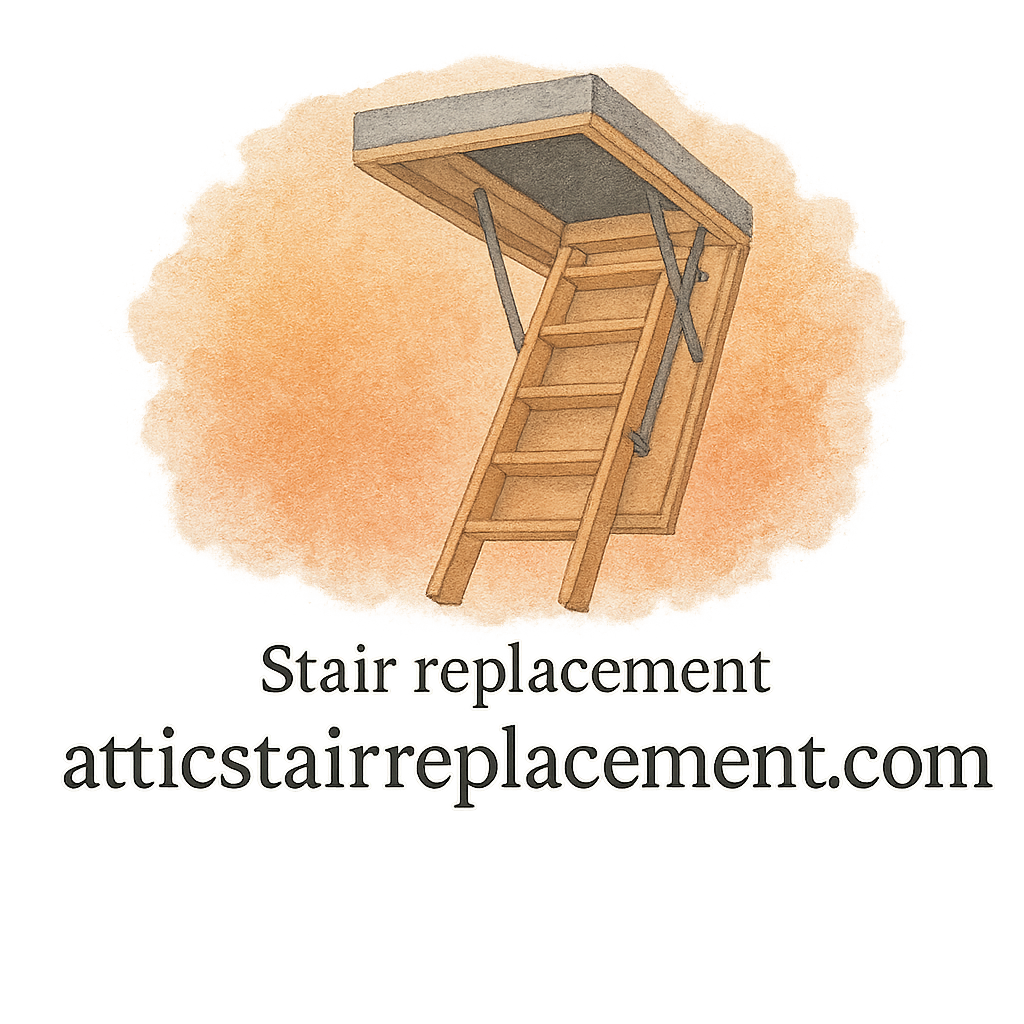Introduction: Why Attic Stair Replacement Planning Matters
Let’s face it — attic stair replacement isn’t the kind of home project that gets much glory. But if done wrong, it can cause endless headaches, injuries, drafts, and even structural damage. Whether you’re tackling a DIY attic stair replacement or hiring a pro, planning is key to avoiding costly and frustrating mistakes.
At AtticStairReplacement.com, we’ve seen it all — the good, the bad, and the staircases that don’t even open right. Let’s walk through the top 8 mistakes homeowners make during attic stair replacement planning — and more importantly, how to avoid them.
Mistake #1: Ignoring Measurements
Ceiling Height and Opening Size
Getting the right measurements seems obvious, but it’s shockingly easy to mess up. Your new attic stairs need to match the existing rough opening — not just in width, but also in length and depth.
Measure your ceiling height. Measure your attic floor height. Then measure again.
Want help? Our detailed DIY Installation Guide will walk you through this step-by-step.
Folding vs. Telescoping vs. Scissor Types
Each style requires different clearance. Telescoping ladders need vertical space. Folding stairs need more swing room. Scissor stairs are great for tight spaces but not always the easiest to install.
Pick based on your space and not just looks. A cool design won’t help if you can’t open the darn thing!
Mistake #2: Choosing the Wrong Material
Wood, Aluminum, and Steel: What to Know
Each material has its pros and cons. Wooden attic ladders look classic but can warp in humid climates. Aluminum is lightweight and rust-resistant. Steel is incredibly strong but heavier and prone to corrosion in certain environments.
Check out our product reviews to find the best material for your needs.
Durability and Climate Considerations
If you live in a humid or coastal area, avoid materials that won’t hold up. Use our durable stair guide to find weather-resistant options.
Mistake #3: Not Considering Weight Capacity
Understanding Load Ratings
This isn’t just about your weight. Think of the stuff you’ll carry into the attic — boxes, bins, maybe even furniture. Attic ladders range in weight capacities from 200 to 400 lbs.
Check the label. If it’s not clearly marked, run the other way.
Future-Proofing Your Attic Access
You may not need heavy-duty access now, but plans change. Install something that can handle future needs. Explore our heavy-duty stair options.

Mistake #4: Skipping Professional Advice
Why a DIY Isn’t Always a Good Idea
Sure, you can do it yourself — but should you? A misstep could lead to damage, injury, or code violations. Many homeowners underestimate the complexity of attic stair installations.
Consulting Experts Before Installation
Even if you plan to DIY, take a peek at our expert advice section. It’s packed with tips, guides, and real-world solutions from pros.
Mistake #5: Overlooking Insulation and Energy Loss
Importance of Sealing and R-Value
Most attics are poorly insulated. If your new stair doesn’t have a seal or insulated door, you’re basically throwing cash out the ceiling. Look for models with high R-values and tight seals.
Protect your energy bills and learn more in our home improvement section.
Mistake #6: Ignoring Building Codes and Safety
Permit Requirements and Fire Safety
Some cities require permits, especially if you’re modifying ceiling joists or structure. Don’t skip this step — fines and safety issues aren’t worth it.
And let’s talk fire ratings. If your attic is over a garage or has HVAC systems, fire-rated ladders may be required. Check local building codes or browse our contractor-approved models.
Mistake #7: Going Cheap on Hardware
Hinges, Springs, and Long-Term Performance
You might save $50 today and pay $500 in repairs tomorrow. Cheap attic stairs often come with flimsy hinges and springs that wear out fast.
Invest in quality hardware. Explore our list of long-lasting models reviewed by pros.
Mistake #8: Not Planning for Maintenance and Repairs
Lifespan and Common Repairs
Attic stairs aren’t forever. Hinges loosen, springs snap, and wooden treads crack. Plan for maintenance. Install models with easily replaceable parts.
Visit our maintenance and repair section to stay ahead of problems.
How to Avoid These Mistakes
Use Trusted Resources
From measuring tips to code compliance, everything you need is at your fingertips on AtticStairReplacement.com. Avoid rookie errors by browsing our sections on remodeling, DIY, and hidden costs.
Plan Like a Pro
It’s not just a stair — it’s an access point, a safety issue, and an energy efficiency concern rolled into one. Use our job-quality tips to get it done right the first time.
Conclusion
Attic stair replacement seems straightforward — until it’s not. From overlooked measurements to cheap hardware mistakes, there’s a lot that can go wrong. But with the right planning, materials, and expert help, you’ll get a safe, sturdy, and energy-efficient staircase that lasts.
Avoid these 8 homeowner mistakes and you’ll save money, avoid stress, and actually enjoy that “new attic access” feeling.
Need a little help? Dive into more at AtticStairReplacement.com — your one-stop hub for attic access upgrades.
FAQs
1. What’s the most common mistake in attic stair replacement?
Ignoring proper measurements. If it doesn’t fit, nothing else matters.
2. Can I install attic stairs myself?
Yes, but be careful. Follow our DIY installation guide and check local building codes.
3. What material is best for attic stairs?
It depends on your climate. Aluminum is rust-resistant, wood looks great, and steel is strongest.
4. How much weight should attic stairs support?
Ideally 300-400 lbs. Always think about future use — not just today’s needs.
5. How do I know if my stairs are insulated properly?
Check the R-value and door seal. Poor insulation = high energy bills.
6. Are permits required for attic stair installation?
Sometimes. Especially when altering structural elements. Always check with local authorities.
7. Where can I find expert help or reviews?
Right here: Expert Advice and Product Reviews at AtticStairReplacement.com.


